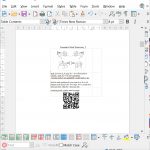 tched the video on YouTube. Most patients still preferred learning from my assistant.
tched the video on YouTube. Most patients still preferred learning from my assistant.I run a day care orthopedic surgery in Bhadravathi, a town where most of my patients come from lower socioeconomic backgrounds. When I started my practice 30 years ago, there were no trained physiotherapists in my town. This meant that I had to teach my patients exercises myself. As time went on, I realized the need for a more efficient way to provide exercise instructions to my patients.
In 1998, I began using computers to assist me with electronic medical records (EMR) and other aspects of my practice. This sparked the idea of creating handouts to teach my patients exercises. I started with my favorite set of exercises: isometric neck exercises. Keeping it simple was my whole focus.
The process of creating these handouts was not without its challenges. In 1999, the internet was slow, and searching for images using Netscape and Microsoft Internet Explorer was a tedious task. I had a page scanner, which I used to scan images from standard handouts. Once I found the images I needed, I focused on writing clear and simple instructions to accompany them.
My goal was to create a chart that even the most primitive hillbilly could understand. I used the same wording for all exercises to maintain consistency. The instructions were as follows: “Hold in each position till you count 0 to 20 or 30. Repeat each exercise for 5-10 reps. For 1 month do 2 times per day. Then do 1 time per day.” I also translated these instructions into Kannada: ‘ಪ್ರತೀ ಭ೦ಗಿಯಲ್ಲೂ 0 ಇಂದ 20 – 30 ಎಣಿಸುವವರೆಗೂ ಇರಬೇಕು. ಪ್ರತೀ ಸಲ 5-10 ಬಾರಿ ಮಾಡಬೇಕು. 1 ತಿಂಗಳು ದಿನಕ್ಕೆ 2 ಸಲ ಮಾಡಬೇಕು. ನಂತರ ದಿನಕ್ಕೆ 1 ಸಲ.’
Whenever a patient needed these exercises, I would print the image and instructions on the back of their prescription. My ‘all-purpose assistant’ would then explain the exercises to the patient in just a few words. Later on, some of my more tech-savvy patients even started making videos while the exercises were being explained.
In 2019, I decided to take things a step further by creating my first video for my patients. I posted the video on YouTube and created a QR code for it, which I added to the exercise chart.
However, I noticed that very few people wa tched the video on YouTube. Most patients still preferred learning from my assistant.
tched the video on YouTube. Most patients still preferred learning from my assistant.
This journey of creating my own simple exercise chart has saved me a tremendous amount of time and has been incredibly helpful for my patients, especially those from rural areas. In today’s corporate medical practice, patients often have to visit physiotherapists for exercises, paying hefty fees for the service. Even if they forget most of the exercises taught by the physiotherapist, they always remember the fees they paid.
Unknowingly since the begining of my clinical pracice and my software journey, my approach, has always been to keep it simple. Slightly later in may practice I came across this “Keep It Simple, Short” (KISS). This design principle became a guiding force in my practice. Keeping things simple has helped me immensely, a lesson I also applied while designing and deploying enterprise-level billing and EMR software.
The KISS principle, which stands for “Keep It Simple, Stupid,” is sometimes elegantly referred to without the comma. It can also be stretched to mean “keep it super simple,” “keep it simple, silly,” “keep it short and simple,” “keep it short and sweet,” “keep it simple and straightforward,” “keep it small and simple,” “keep it simple, soldier,” “keep it simple, sailor,” “keep it simple, sweetie,” “keep it stupidly simple,” or “keep it sweet and simple,” as Wikipedia puts it.
To conclude, let me share a quote by Theodor Seuss Geisel: “So the writer who breeds more words than he needs, is making a chore for the reader who reads.” This quote perfectly encapsulates the essence of the KISS principle and the importance of simplicity in communication.
Oh! Does it apply to me?